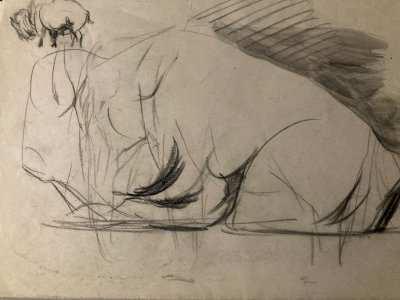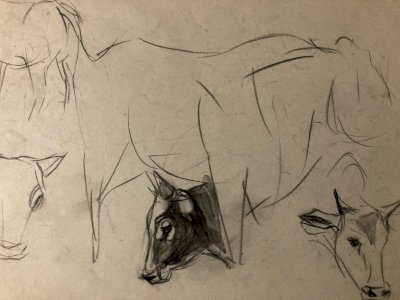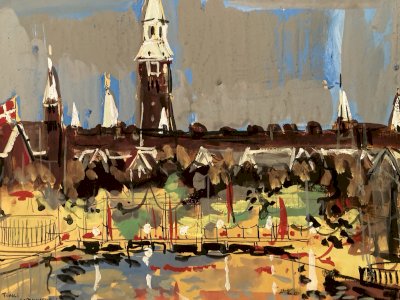- Sell Now
- Home
-
FURNISH
All STORAGE FURNITURE • Wardrobe • Chests of drawers, Chiffonnier • Sideboard • Shelves, Bookshelves • File cabinet • Sewing Furniture • Bar cabinet • TV Stand • Trunk, Chest TABLE & BEDSIDE TABLE • Dinner Table • Coffee table, side table, end table & Bedside • Console, Pedestal table & Selette • Serving Table, Trolley • Card Table • Draper's counter & table SEAT • Sofa • Armchair • Chair • Stool • Bench • Daybed • Beanbag & Footrest • Deckchair & Outdoor DESK, SECRETARY, DRESSING TABLE GARDEN LOUNGE BEDDING • Bed • Bedhead • Cradle, Moses basket CRAFT FURNITURE, WORKSHOP • Workbench • Stool, Ladder, Step • Easel & Trestle SCREEN PIANO
-
DECORATE
All TO PUT • Sculpture, Statuette • Vase & Planter • Dame Jeanne, Bonbonne & Flacon • Bridal globe, Dome • Pin tray, Ashtray • Candlestick & Candle • Photo frame • Stone, Fossil, Mineral • Earth Globe MIRROR WALL DECORATION • Painting • Engraving & Illustration • Poster • Tapestry • Wall Frame • Plate & Sign • Juju Hat & Wall Paniel • Mask • Hunting Trophy • Other object to hang CLOCK, PENDULUM & ALARM CLOCK ARRANGEMENT • Jar, Box & Case • Basket, Wastebasket & Crates • Magazine Rack & Vinyl Holder • Display & Spinner • Coat hook & Coat rack • Furniture Valet & Mannequin • Towel Holder • Suitcase & Travel Bag • Bottle Rack • Umbrella holder BATHROOM OFFICE • Mail holder • Bookends • Sulphide & Paperweight • Stationery FIREPLACE ACCESSORIES HOBBIES • Vintage Sport • Music • Vintage device • Smoking Item • Militaria, Ancient weapon • Miniature Vehicle • Game, Playing Cards • Collection object & Curiosity BIRD CAGE RELIGION, SPIRITUALITY
- TEXTURE
- ILLUMINATE
-
ACCOMODATE
All TABLE & SERVING • Plate • Silverware • Knife Holder • Glass • Bowl, Mug, Cup • Bowl, Ramekin & Cup • Dish, Cup & Salad Bowl • Tray, Basket & Server • Table Mat • Pitcher, Carafe, Bottle, Tea & Coffee Jug • Ice Bucket • Salt & Pepper shakers, Oil & Vinegar shakers • Sugar and jam maker • Gravy boat • Butter dish • Egg cup • Terrine OLD BALANCE CUTTING BOARD GRINDER CASSEROLE, SAUCEPAN & PAN KITCHEN UTENSIL & ACCESSORY
- TINKER
- KIDS
- Jewelry & Accessories
Login
Description
Delivery service: Colissimo A very beautiful drawing in pencil and sanguine, signed by Emile Othon Friesz, who was born in Le Havre on February 6, 1879. Despite his father's reluctance as a navigator, Othon Friesz's mother eventually yielded to her son's incessant requests and enrolled him in the École des Beaux-Arts in Le Havre at the age of thirteen. There, he attended classes by Charles Lhuillier, who played a crucial role in the development of his work, alongside his friend Raoul Dufy, and later met George Braque, who was a student in the evening classes taught by Courchet. He received a municipal scholarship in 1897 and continued his studies at the École des Beaux-Arts in Paris. He then joined Léon Bonnat's studio, an academic realist painter, who did not seem to exert a great influence on the young Othon Friesz. Dufy, still, joined him there in 1899. Friesz befriended the students of Gustave Moreau, including Manguin, Marquet, Matisse, and later Camoin. In the absence of his teaching, it was at the Louvre that Friesz drew his greatest inspiration. Fascinated by the group of Impressionists, he met Guillaumin, who was thirty-eight years his senior, with whom he spent the summer of 1901, and then Pissaro the following year. In 1903, the artist participated for the first time in the Salon des Indépendants, then in the Salon d'Automne in 1904, and did not yet enter the "cage of wild beasts" in 1905, where many of Moreau's students were found. In search of a synthesis between modernity and tradition, he only gradually freed himself from the decaying Impressionist precepts. It was during the summer of 1906 that the first wild beast agreements appeared. Friesz stayed in Antwerp with his friend George Braque and engaged in unprecedented plastic experimentation without completely freeing himself from the naturalism of Impressionism. The pure color, used by Braque in the service of pictorial space, was not yet fully integrated into Friesz's mindset, who approached this frank and revolutionary painting more timidly. Nevertheless, his paintings exhibited at the Salon d'Automne of 1906 in room III, that of Matisse, Manguin, Marquet, Derain, Vlaminck, Camoin, Girieud, and Van Dongen, demonstrated a real desire for affiliation with the group. During the winter of 1907, Friesz traveled alone to Honfleur. There, color finally set the tone and form. The peak of the wild beast, if not of all his work, occurred in the summer of 1907 during his stay with Braque on the Mediterranean coast in La Ciotat. The two painters found the dazzling light of the south of France there, which had enchanted Matisse and Derain, a reminiscence of the young man's travels with his mother. Cradled by the Mediterranean and its gentle warmth, color radiated from Friesz's canvases. The arabesque in the drawing of lush vegetation, the stylization of forms, eradicated the illusionary descriptive elements to present only the essential: blazing, lyrical landscapes, whose chromatic force burst forth. That's it, Othon Friesz is a wild beast. "It was suddenly, (...) in La Ciotat, on the motif, that I realized a laquered outline was born, inscribing the hill with a line. I had returned to drawing instinctively, out of pictorial necessity. I had relearned drawing by myself, felt drawing, which neither masters nor antiquities could teach me. A more serious art brought me back to style, made of cadences and rhythms," the painter recounted. (Othon Friesz, cited in F. Fels, L'Art vivant, from 1900 to the present, Geneva, Pierre Cailler, 1950) That same year, the artist exhibited about forty canvases at dealer Druet's, with whom he signed an exclusivity contract. Upon their return to Paris, Braque drew closer to Picasso and his cubist theories. Friesz, however, seemed once again drawn by the past and those he admired so much. The influence of Cézanne, supported by a solid structure, the energy of line and strong contrasts became dominant. As the First World War approached, his palette gradually darkened with tones of browns, greens, and blues. Othon Friesz's success began to manifest with exhibitions no longer only in France at Druet’s and the Salon des Indépendants as well as at the Salon d'Automne in Paris, but also at the Salon of the Golden Fleece and the Diamond Jack salon in Moscow, later in London during the "Manet and the Post-Impressionists" exhibition, at the Armory Show in New York, the Cassiner Gallery in Berlin, in Saint Petersburg, Düsseldorf, Cologne, Amsterdam, Leipzig, Prague, Brussels, and finally Munich. However, the onset of the First World War slowed this meteoric international rise. In 1914, the painter made a decisive encounter and built a lasting friendship with Léon Pédron, a wealthy coffee merchant. The businessman asked Friesz, now a renowned artist, to manage his collection and bought a significant portion of his production. This collaboration sheltered the artist from need and allowed him to lead a comfortable life as a recognized artist. Concerned about his commercial development, Friesz ended his exclusivity contract with Druet. The painter grew closer to Emile Bernard and Maurice Denis, with whom he fervently defended the legacy of Cézanne. In 1919, Pédron founded "Les Amis de la peinture moderne" to financially support Friesz's work. The artist was promoted to knight in 1925, officer in 1933, and finally commander of the Legion of Honor in 1938. Upon Pédron's death, it was Katia Granoff of the eponymous gallery who became Friesz's main patron. In the last period of his life, the painter's art became increasingly classical, devoid of new research and plastic advances. On January 10, 1949, Emile Othon Friesz died in Paris Authenticity: Original Type: Drawing Period: 20th and contemporary Material: Charcoal Style: 1920 Theme: Character
Réf :
#337548
Related Products
Comments
Drawing Emile Othon Friesz Charcoal Paper Nude Woman 1920 Erotic Nude Ancient
465€
31500 Toulouse
Ce site contient des liens d’affiliation pour lesquels je peux recevoir une compensation.
Description
Delivery service: Colissimo A very beautiful drawing in pencil and sanguine, signed by Emile Othon Friesz, who was born in Le Havre on February 6, 1879. Despite his father's reluctance as a navigator, Othon Friesz's mother eventually yielded to her son's incessant requests and enrolled him in the École des Beaux-Arts in Le Havre at the age of thirteen. There, he attended classes by Charles Lhuillier, who played a crucial role in the development of his work, alongside his friend Raoul Dufy, and later met George Braque, who was a student in the evening classes taught by Courchet. He received a municipal scholarship in 1897 and continued his studies at the École des Beaux-Arts in Paris. He then joined Léon Bonnat's studio, an academic realist painter, who did not seem to exert a great influence on the young Othon Friesz. Dufy, still, joined him there in 1899. Friesz befriended the students of Gustave Moreau, including Manguin, Marquet, Matisse, and later Camoin. In the absence of his teaching, it was at the Louvre that Friesz drew his greatest inspiration. Fascinated by the group of Impressionists, he met Guillaumin, who was thirty-eight years his senior, with whom he spent the summer of 1901, and then Pissaro the following year. In 1903, the artist participated for the first time in the Salon des Indépendants, then in the Salon d'Automne in 1904, and did not yet enter the "cage of wild beasts" in 1905, where many of Moreau's students were found. In search of a synthesis between modernity and tradition, he only gradually freed himself from the decaying Impressionist precepts. It was during the summer of 1906 that the first wild beast agreements appeared. Friesz stayed in Antwerp with his friend George Braque and engaged in unprecedented plastic experimentation without completely freeing himself from the naturalism of Impressionism. The pure color, used by Braque in the service of pictorial space, was not yet fully integrated into Friesz's mindset, who approached this frank and revolutionary painting more timidly. Nevertheless, his paintings exhibited at the Salon d'Automne of 1906 in room III, that of Matisse, Manguin, Marquet, Derain, Vlaminck, Camoin, Girieud, and Van Dongen, demonstrated a real desire for affiliation with the group. During the winter of 1907, Friesz traveled alone to Honfleur. There, color finally set the tone and form. The peak of the wild beast, if not of all his work, occurred in the summer of 1907 during his stay with Braque on the Mediterranean coast in La Ciotat. The two painters found the dazzling light of the south of France there, which had enchanted Matisse and Derain, a reminiscence of the young man's travels with his mother. Cradled by the Mediterranean and its gentle warmth, color radiated from Friesz's canvases. The arabesque in the drawing of lush vegetation, the stylization of forms, eradicated the illusionary descriptive elements to present only the essential: blazing, lyrical landscapes, whose chromatic force burst forth. That's it, Othon Friesz is a wild beast. "It was suddenly, (...) in La Ciotat, on the motif, that I realized a laquered outline was born, inscribing the hill with a line. I had returned to drawing instinctively, out of pictorial necessity. I had relearned drawing by myself, felt drawing, which neither masters nor antiquities could teach me. A more serious art brought me back to style, made of cadences and rhythms," the painter recounted. (Othon Friesz, cited in F. Fels, L'Art vivant, from 1900 to the present, Geneva, Pierre Cailler, 1950) That same year, the artist exhibited about forty canvases at dealer Druet's, with whom he signed an exclusivity contract. Upon their return to Paris, Braque drew closer to Picasso and his cubist theories. Friesz, however, seemed once again drawn by the past and those he admired so much. The influence of Cézanne, supported by a solid structure, the energy of line and strong contrasts became dominant. As the First World War approached, his palette gradually darkened with tones of browns, greens, and blues. Othon Friesz's success began to manifest with exhibitions no longer only in France at Druet’s and the Salon des Indépendants as well as at the Salon d'Automne in Paris, but also at the Salon of the Golden Fleece and the Diamond Jack salon in Moscow, later in London during the "Manet and the Post-Impressionists" exhibition, at the Armory Show in New York, the Cassiner Gallery in Berlin, in Saint Petersburg, Düsseldorf, Cologne, Amsterdam, Leipzig, Prague, Brussels, and finally Munich. However, the onset of the First World War slowed this meteoric international rise. In 1914, the painter made a decisive encounter and built a lasting friendship with Léon Pédron, a wealthy coffee merchant. The businessman asked Friesz, now a renowned artist, to manage his collection and bought a significant portion of his production. This collaboration sheltered the artist from need and allowed him to lead a comfortable life as a recognized artist. Concerned about his commercial development, Friesz ended his exclusivity contract with Druet. The painter grew closer to Emile Bernard and Maurice Denis, with whom he fervently defended the legacy of Cézanne. In 1919, Pédron founded "Les Amis de la peinture moderne" to financially support Friesz's work. The artist was promoted to knight in 1925, officer in 1933, and finally commander of the Legion of Honor in 1938. Upon Pédron's death, it was Katia Granoff of the eponymous gallery who became Friesz's main patron. In the last period of his life, the painter's art became increasingly classical, devoid of new research and plastic advances. On January 10, 1949, Emile Othon Friesz died in Paris Authenticity: Original Type: Drawing Period: 20th and contemporary Material: Charcoal Style: 1920 Theme: Character
Réf :
#337548
 English
English  Français
Français 


















